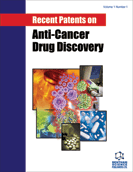
Abstract
Gastrointestinal (GI) cancer, characterized by its leading mortality, is one of the most common cancers worldwide. The underlying mechanisms contributing to epithelial to mesenchymal transition (EMT) and metastasis of GI cancer are poorly understood. It is well known that a great number of transcription factors including FoxM1, KLF4, STAT3 and so forth, are associated with the process of EMT and have also been strongly implicated in the proliferation, migration, and invasion of GI cancer cells. Forkhead box M1 (FoxM1), a transcription factor of the Forkhead family, is strongly positive in GI cancers and can be regarded as an oncogene in GI cancers. A number of studies have reported that FoxM1 is involved in tumorigenesis and promotes cell proliferation, migration, invasion, angiogenesis, EMT and metastasis by targeting downstream genes. In this review, we will focus on highlighting the functions of FoxM1 in tumorigenesis, angiogenesis, invasion and metastasis of GI cancers, pointing out the roles of FoxM1 in GI cancer EMT through crosstalk with TGFβ, Wnt signaling pathways and ncRNA, to better understand the role of FoxM1 in GI cancer, and will discuss recent relevant patents concerning FoxM1 in tumor therapy.
Keywords: EMT, FoxM1, gastrointestinal cancer, ncRNA, TGF-β, WNT.
Recent Patents on Anti-Cancer Drug Discovery
Title:Role of FoxM1 in the Progression and Epithelial to Mesenchymal Transition of Gastrointestinal Cancer
Volume: 12 Issue: 3
Author(s): Jing Zhang, Yangyang Niu and Chen Huang*
Affiliation:
- Department of General Surgery, Shanghai General Hospital, School of Medicine, Shanghai Jiao Tong University, Shanghai 200080,China
Keywords: EMT, FoxM1, gastrointestinal cancer, ncRNA, TGF-β, WNT.
Abstract: Gastrointestinal (GI) cancer, characterized by its leading mortality, is one of the most common cancers worldwide. The underlying mechanisms contributing to epithelial to mesenchymal transition (EMT) and metastasis of GI cancer are poorly understood. It is well known that a great number of transcription factors including FoxM1, KLF4, STAT3 and so forth, are associated with the process of EMT and have also been strongly implicated in the proliferation, migration, and invasion of GI cancer cells. Forkhead box M1 (FoxM1), a transcription factor of the Forkhead family, is strongly positive in GI cancers and can be regarded as an oncogene in GI cancers. A number of studies have reported that FoxM1 is involved in tumorigenesis and promotes cell proliferation, migration, invasion, angiogenesis, EMT and metastasis by targeting downstream genes. In this review, we will focus on highlighting the functions of FoxM1 in tumorigenesis, angiogenesis, invasion and metastasis of GI cancers, pointing out the roles of FoxM1 in GI cancer EMT through crosstalk with TGFβ, Wnt signaling pathways and ncRNA, to better understand the role of FoxM1 in GI cancer, and will discuss recent relevant patents concerning FoxM1 in tumor therapy.
Export Options
About this article
Cite this article as:
Zhang Jing , Niu Yangyang and Huang Chen*, Role of FoxM1 in the Progression and Epithelial to Mesenchymal Transition of Gastrointestinal Cancer, Recent Patents on Anti-Cancer Drug Discovery 2017; 12 (3) . https://dx.doi.org/10.2174/1574892812666170424144352
| DOI https://dx.doi.org/10.2174/1574892812666170424144352 |
Print ISSN 1574-8928 |
| Publisher Name Bentham Science Publisher |
Online ISSN 2212-3970 |
 113
113 9
9 1
1 2
2
- Author Guidelines
- Graphical Abstracts
- Fabricating and Stating False Information
- Research Misconduct
- Post Publication Discussions and Corrections
- Publishing Ethics and Rectitude
- Increase Visibility of Your Article
- Archiving Policies
- Peer Review Workflow
- Order Your Article Before Print
- Promote Your Article
- Manuscript Transfer Facility
- Editorial Policies
- Allegations from Whistleblowers
Related Articles
-
Potential Health Benefits of Berries
Current Nutrition & Food Science An Integrated In Silico Method to Discover Novel Rock1 Inhibitors: Multi- Complex-Based Pharmacophore, Molecular Dynamics Simulation and Hybrid Protocol Virtual Screening
Combinatorial Chemistry & High Throughput Screening IAPs as a Target for Anticancer Therapy
Current Cancer Drug Targets The Role of Cytochrome P450 in Cytotoxic Bioactivation: Future Therapeutic Directions
Current Cancer Drug Targets The Role of the Tyrosine Kinase Inhibitor STI571 in the Treatment of Cancer
Current Cancer Drug Targets Prediction of Bioactive Compound Pathways Using Chemical Interaction and Structural Information
Combinatorial Chemistry & High Throughput Screening GCPII Imaging and Cancer
Current Medicinal Chemistry Venoms and Poisonings during the Centuries: A Narrative Review
Endocrine, Metabolic & Immune Disorders - Drug Targets Vertebral Lesions from AIDS-Related Kaposi's Sarcoma
Current HIV Research Clinical Next Generation Sequencing for Precision Medicine in Cancer
Current Genomics Biologically Active Dietary Peptides
Mini-Reviews in Medicinal Chemistry Nicotinamide Adenine Dinucleotide Based Therapeutics, Update
Current Medicinal Chemistry A Palliative Care Approach to the Advanced Heart Failure Patient
Current Cardiology Reviews A Comprehensive Review of <i>Garcinia pedunculata Roxb</i>. and its Therapeutic Potential
Mini-Reviews in Medicinal Chemistry Structure, Function, Involvement in Diseases and Targeting of 14-3-3 Proteins: An Update
Current Medicinal Chemistry Emerging Treatment Strategies and Potential Therapeutic Targets in Primary Sjogrens Syndrome
Inflammation & Allergy - Drug Targets (Discontinued) Rationale for New Drugs Targeting the Tissue Microenvironment in Patients with HCC
Current Pharmaceutical Design TLR7/9 Antagonists as Therapeutics for Immune-Mediated Inflammatory Disorders
Inflammation & Allergy - Drug Targets (Discontinued) Liposomes: An Emerging Approach for the Treatment of Cancer
Current Pharmaceutical Design Metastatic Colorectal Cancer: Role of Target Therapies and Future Perspectives
Current Cancer Drug Targets


























